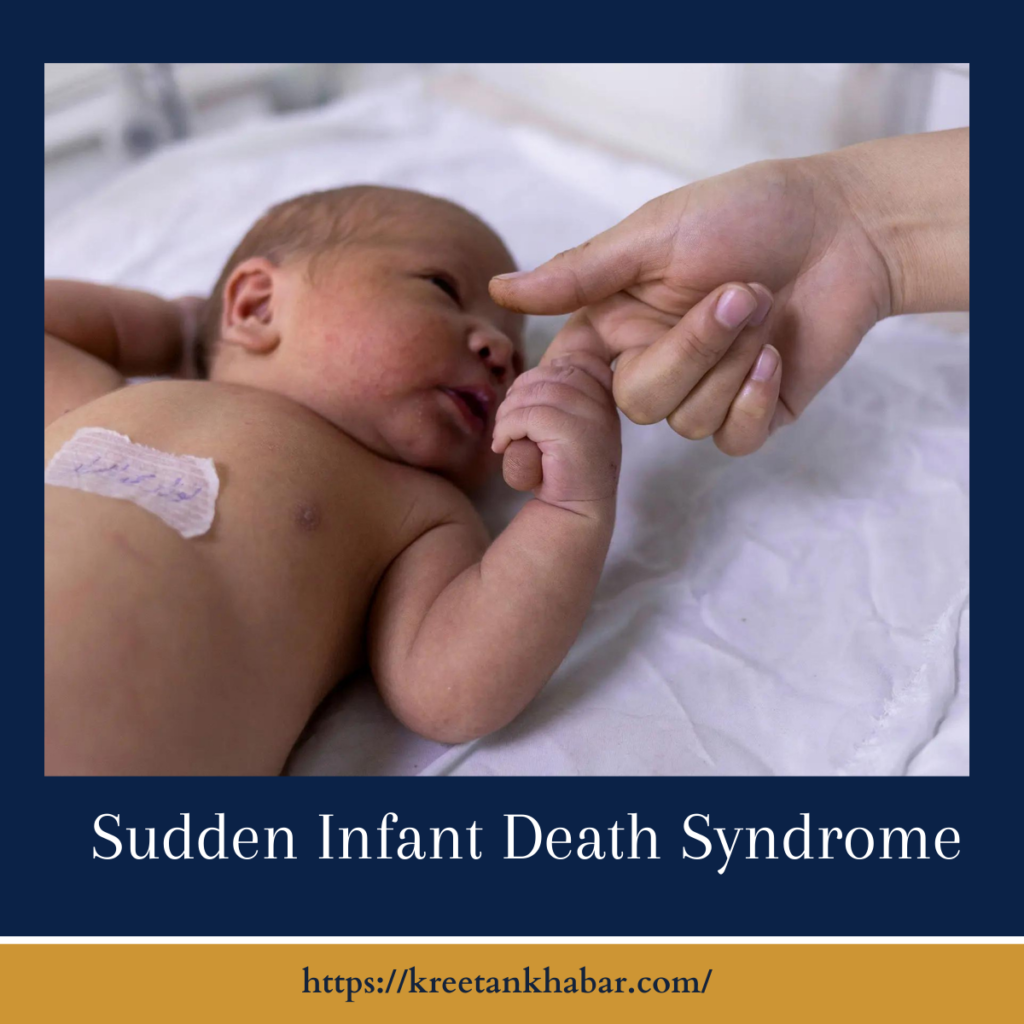Sudden Infant Death Syndrome (SIDS)
Introduction
In the delicate dance of parenthood, the specter of Sudden Infant Death Syndrome (SIDS) casts a shadow that lingers in the minds of parents and caregivers. SIDS, often referred to as “crib death,” remains an enigmatic and devastating occurrence that strikes seemingly healthy infants without warning. This article seeks to navigate the intricacies of SIDS, exploring its elusive nature, potential risk factors, and the ongoing quest for understanding and prevention.

The Enigma of Sudden Infant Death Syndrome
Sudden Infant Death Syndrome is a heart-wrenching phenomenon that perplexes medical professionals and parents alike. Defined as the sudden and unexplained death of an otherwise healthy infant, typically during sleep, SIDS continues to resist complete comprehension. It doesn’t discriminate based on socioeconomic status, geographic location, or parental care, making it an indiscriminate and elusive adversary.
- The Silent Intruder: SIDS strikes without a warning bell, leaving parents to grapple with the inexplicable loss of a seemingly healthy infant. The absence of discernible symptoms or a clear cause of death adds to the mystique of SIDS, making it a silent intruder in the realm of parenthood.
- Age and Vulnerability: Infants aged between one and four months appear to be most vulnerable to SIDS, heightening parental vigilance during this critical period. The tragedy often occurs during sleep, earning it the colloquial term “cot death” as cribs become the unexpected stage for this mysterious event.
Understanding Potential Risk Factors
Delving into the intricacies of Sudden Infant Death Syndrome (SIDS) unveils a landscape where understanding potential risk factors becomes pivotal in the quest for prevention. The silent enigma of SIDS doesn’t follow a predictable script, but ongoing research has shed light on certain elements that may heighten vulnerability. The sleep environment emerges as a critical player, with soft bedding, overheating, and the prone sleeping position implicated in SIDS cases.
Maternal smoking during pregnancy or postpartum exposes infants to harmful components of smoke, impacting their delicate respiratory systems. Premature birth and low birth weight also cast a shadow, suggesting a link between developmental factors and susceptibility to SIDS. Navigating this complex terrain involves not only recognizing these risk factors but also promoting awareness and safe sleep practices to create an environment where infants can peacefully rest, guarded against the silent intruder that is Sudden Infant Death Syndrome.
While the precise cause of SIDS remains elusive, ongoing research has identified certain risk factors that may contribute to its occurrence:
- Sleep Environment: A baby’s sleep environment plays a crucial role. Soft bedding, overheating, and the prone sleeping position have been associated with an increased risk of SIDS. Implementing safe sleep practices, such as placing infants on their backs to sleep and maintaining a clear sleep space, is emphasized in SIDS prevention efforts.
- Maternal Smoking: Maternal smoking during pregnancy or exposure to secondhand smoke after birth has been linked to an elevated risk of SIDS. The harmful components of smoke may compromise an infant’s respiratory system, increasing susceptibility.
- Premature Birth and Low Birth Weight: Premature birth and low birth weight are identified risk factors, with preterm infants facing a higher likelihood of SIDS. The delicate balance of physiological development in these infants may contribute to their vulnerability.
- Sleeping Environment Awareness: Promoting awareness about the significance of a safe sleep environment is paramount. Educating parents and caregivers on the importance of firm mattresses, avoiding soft bedding, and maintaining a cool sleep space contributes to a safer sleeping environment.
The Ongoing Quest for Prevention
In the realm of parenting, the prevention of Sudden Infant Death Syndrome (SIDS) becomes a poignant endeavor, marked by a commitment to safeguarding the tiniest members of our society. As a mysterious and often silent adversary, SIDS doesn’t yield all its secrets, but there are proactive measures that offer a glimmer of hope. The “Back to Sleep” campaign stands as a beacon, advocating for the simple yet powerful act of placing infants on their backs to sleep.
Safe sleep practices take center stage, emphasizing firm mattresses, clear sleep spaces, and a cool, well-ventilated environment. The awareness of maternal smoking’s impact on infant vulnerability underscores the importance of supporting pregnant individuals in their smoking cessation efforts. And within the hallowed halls of research and innovation, there lies the promise of unraveling more of SIDS’s enigmatic nature, offering a pathway toward a future where every slumber is guarded against the unforeseen, where prevention becomes a narrative of promise rather than a response to tragedy.
Preventing Sudden Infant Death Syndrome involves a collaborative effort between healthcare professionals, parents, and researchers. While SIDS remains a complex puzzle, certain preventive measures have been endorsed to mitigate the risk:
- Back to Sleep: The “Back to Sleep” campaign has been a cornerstone in SIDS prevention. Placing infants on their backs to sleep has shown a significant reduction in the occurrence of SIDS.
- Safe Sleep Practices: Educating parents on safe sleep practices is crucial. Avoiding soft bedding, keeping the sleep environment cool, and ensuring proper ventilation contribute to a safer sleep space.
- Maternal Health Awareness: Raising awareness about the impact of maternal smoking on infant health is imperative. Supporting pregnant individuals in smoking cessation efforts and discouraging exposure to secondhand smoke are essential preventive measures.
- Research and Innovation: Ongoing research into the complexities of SIDS is essential for developing preventive strategies. Advances in understanding the physiological and environmental factors contributing to SIDS are critical for effective prevention.
Conclusion
As we navigate the realms of parenthood, the specter of Sudden Infant Death Syndrome reminds us of the fragility of life’s early chapters. The quest to unravel the mysteries of SIDS continues, driven by a shared commitment to safeguarding the most vulnerable members of our society. Through awareness, research, and collective efforts, we strive to transform the enigma of SIDS into a narrative of prevention, ensuring that every infant has the opportunity to greet the dawn of a new day.
Read also : Exploring the Delightful Boost of the Green Tea Shot 2023